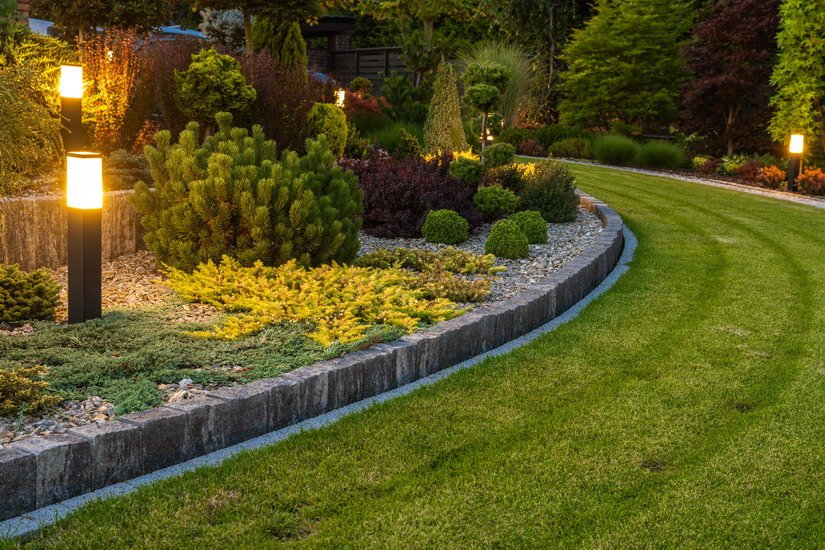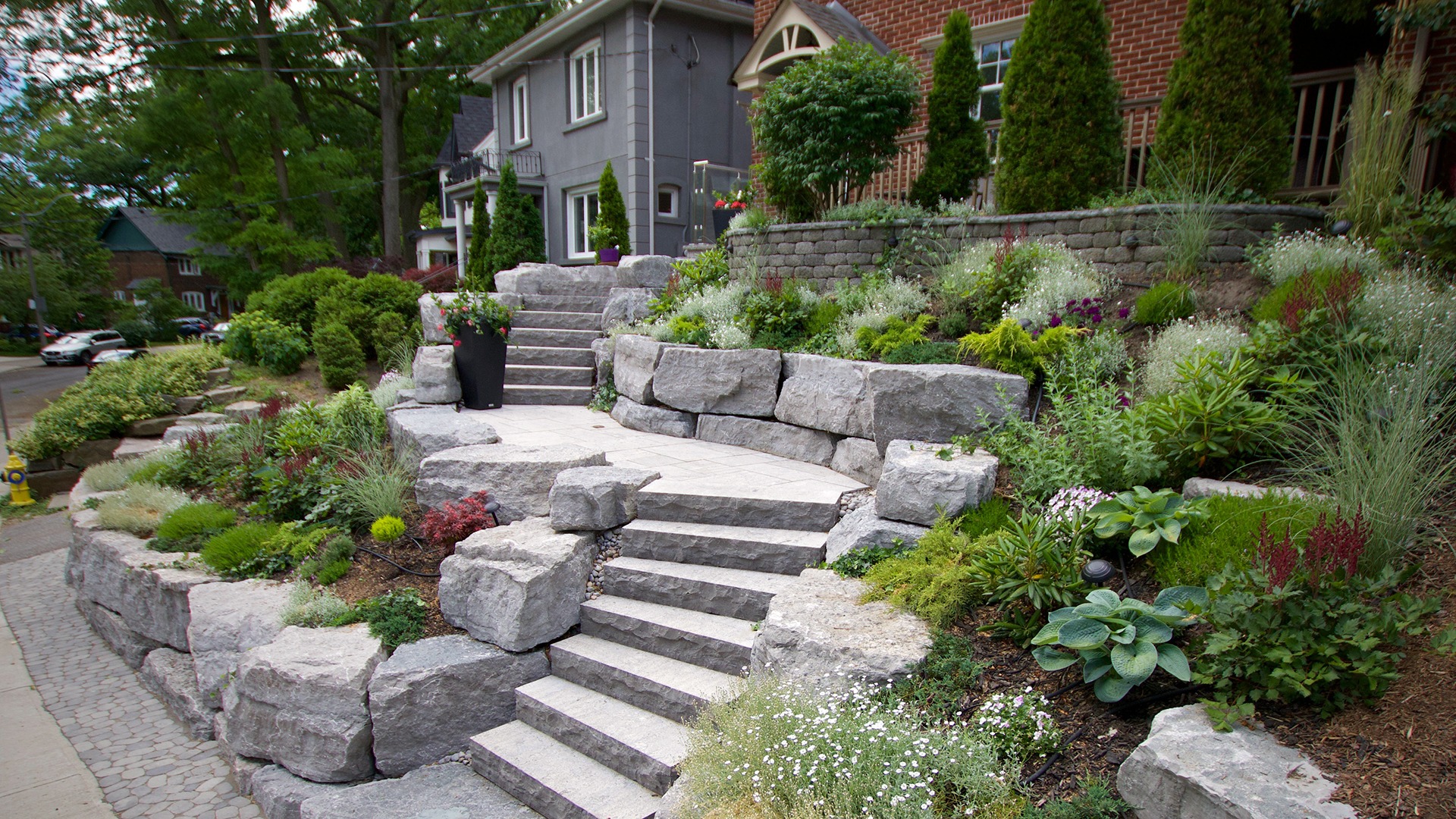Expert-approved landscaping strategies for long-lasting outdoor beauty
Comprehending the Comprehensive Range of Works in Expert Landscape Design Services
The substantial scope of specialist landscaping services includes a range of essential components - landscaping. It consists of landscape layout principles, plant choice, and hardscaping functions. Additionally, it addresses watering systems and upkeep approaches. Each aspect plays an essential role in developing functional and visually pleasing outside rooms. Understanding how these elements work together can expose much concerning the art and scientific research of landscaping. The journey into this complex area is just beginning.
Landscape Style Principles
Efficient landscape design concepts are vital for developing harmonious exterior areas that boost both visual allure and performance (Learn More). These concepts direct the arrangement of aspects within the landscape, making sure a natural visual experience. Key parts consist of equilibrium, which disperses aesthetic weight equally; proportion, which relates the dimension of different aspects to each other and the room; and unity, which creates a feeling of integrity with constant styles and products

Plant Option and Installation
In the domain name of specialist landscape design, plant choice and setup play a critical role in accomplishing a growing garden. Emphasizing indigenous plant advantages, seasonal factors to consider, and the certain dirt and sunshine needs of each varieties guarantees a sustainable and visually pleasing landscape. Mindful preparation in these areas not only improves biodiversity but additionally advertises lasting ecological health and wellness.
Indigenous Plant Advantages
Why should home owners take into consideration native plants for their landscape design projects? Native plants supply various advantages that improve both appearances and ecological sustainability. They are well-adapted to regional environments, needing much less water and maintenance contrasted to non-native species. This durability reduces the requirement for chemical plant foods and pesticides, promoting a much healthier community. In addition, native plants offer environment and food for local wildlife, consisting of pollinators, which can raise biodiversity in suburbs. Their familiarity with regional dirt and climate condition likewise brings about better growth rates and durability. By picking indigenous plants, homeowners not only produce aesthetically enticing landscapes yet also add to environmental preservation, making a favorable influence on their neighborhood setting. Indigenous plants stand for a clever selection for landscape design tasks.
Seasonal Plant Considerations
Homeowners who have actually embraced indigenous plants in their landscape design can better boost their exterior rooms by taking into consideration seasonal plant options. By incorporating plants that prosper in certain seasons, they can produce aesthetically attractive and dynamic landscapes throughout the year. Spring may introduce vivid flowers like tulips and daffodils, while summertime can showcase lavish vegetation and vibrant perennials. Autumn presents a scheme of warm tones with asters and goldenrods, while winter can be accentuated with evergreens and decorative turfs for texture. Specialist landscaping companies commonly suggest selecting plants that not just complement existing indigenous types but additionally supply year-round rate of interest and assistance regional wildlife. This thoughtful strategy to seasonal plant choice guarantees a consistently progressing and sustainable yard atmosphere.
Dirt and Sunlight Requirements
Effective landscaping rests on understanding the specific dirt and sunlight demands of plants. Different varieties flourish under differing conditions, calling for a careful evaluation of both factors throughout the option process. Dirt types, such as sandy, clay, or loamy, impact drainage, nutrition availability, and root growth. Additionally, pH degrees can affect plant health and wellness, necessitating soil screening to ascertain suitability. Sunshine needs vary significantly; some plants prosper completely sun, while others like partial or full shade. A specialist landscaping company takes into consideration these components to ensure peak development and visual appeal. By lining up plant options with the setting's specific qualities, landscapes can accomplish sustainability, strength, and aesthetic consistency, ultimately resulting in successful plant establishment and long-lasting upkeep.
Hardscaping Attributes and Construction

While landscape design usually stimulates pictures of lush plant and dynamic flowers, hardscaping attributes play a crucial role in specifying outside spaces. These components, that include patios, sidewalks, maintaining walls, and ornamental stonework, supply structure and capability to backyards and gardens. Hardscaping makes use of materials such as concrete, timber, brick, and rock, enabling diverse layouts that complement the all-natural landscape.
The construction of hardscaping functions needs careful preparation and execution to assure longevity and aesthetic allure. Specialists evaluate website conditions, water drainage, and spatial partnerships to produce natural exterior settings. Correct setup techniques are essential, as they prevent concerns like erosion and changing over time.
Integrating hardscaping not only boosts the aesthetic interest of a property yet additionally facilitates outside activities, making it a basic element of complete landscaping services. Eventually, thoughtful hardscaping adds to both the functionality and appeal of exterior spaces.
Irrigation Solutions and Water Administration
Reliable watering systems and water monitoring are crucial parts of professional landscaping, as they assure that plants receive the essential hydration for optimal development. These systems can vary from basic drip irrigation setups to advanced computerized automatic sprinkler, developed to fulfill the specific needs of varied landscapes. Correct water management not only optimizes water use, lowering waste, yet likewise enhances plant health and wellness and reduces disease risks.
Landscape design specialists analyze various elements, including soil type, plant species, and local environment, to develop tailored irrigation solutions. Furthermore, including rainwater harvesting methods can better enhance sustainability and effectiveness. Routine upkeep of watering systems is important to preserve functionality and protect against leakages, which can lead to water loss and increased prices (Learn More). Eventually, a properly designed watering system plays a pivotal function in protecting the aesthetic charm of exterior rooms while promoting eco-friendly stewardship within professional landscaping techniques
Lawn Care and Maintenance Methods
Grass treatment and upkeep methods are basic for attaining a lush, healthy yard that enhances the overall landscape. These techniques encompass various methods aimed at promoting suitable development and aesthetic charm. Routine mowing is vital, as it encourages thick, even growth while avoiding weeds from establishing. Additionally, correct fertilizing gives needed nutrients, with applications customized to the specific grass type and soil problems.
Watering techniques need to concentrate on deep, occasional irrigation to encourage origin growth, while aeration improves dirt framework and promotes vitamins and mineral absorption. Parasite and illness management is additionally critical; recognizing problems early enables for effective therapies that lessen damage.
Overseeding can invigorate thin or broken lawns, boosting density and shade (landscaping). By implementing these targeted yard care methods, landscaping experts can guarantee that lawns remain lively and healthy throughout the seasons, substantially adding to the total charm of the property
Seasonal Landscape Care and Maintenance
As the periods modification, correct landscape care ends up being essential for maintaining the health and wellness and elegance of outdoor areas. Each period offers distinct difficulties and needs. In spring, landscape experts concentrate on trimming, growing, and fertilizing to encourage growth. Summer season needs regular watering, weed control, and insect administration to shield freshly established plants.

Throughout the year, seasonal landscape maintenance assurances that outdoor locations stay healthy and balanced and aesthetically appealing. Specialist services can supply tailored upkeep plans that adjust to the particular demands of each season, enabling residential property proprietors to delight in vibrant landscapes year-round. Overall, seasonal treatment is a vital element of professional landscape design that advertises durability and visual value.

Lasting Landscaping Practices
A growing number of residential property proprietors are welcoming lasting landscape design techniques to create eco-friendly outdoor spaces. These practices concentrate on conserving resources, enhancing biodiversity, and reducing environmental impact. Native plants are typically selected for their low tide requirements and compatibility with local communities, decreasing the requirement for chemical fertilizers and pesticides. Rainfall yards and permeable paving are utilized to manage stormwater runoff, advertising groundwater recharge and lowering disintegration.
Moreover, sustainable landscaping incorporates natural horticulture techniques that prioritize dirt health and wellness and promote natural insect control. Effective irrigation systems, such as drip watering and rainwater harvesting, aid enhance water use. In addition, landscape developers increasingly support for using recycled materials, such as redeemed wood and rocks, to lessen waste. By adopting these lasting practices, homeowner not only add to environmental conservation however additionally produce aesthetically pleasing atmospheres that can love marginal maintenance.
Often Asked Questions
The length of time Does a Landscaping Task Usually Require To Total?
Commonly, a landscaping task can take anywhere from a few days to a number of weeks to finish, depending on the job's dimension, design, and complexity demands. Variables such as weather and resource schedule additionally influence timelines.
What Elements Impact the Price of Landscape Design Services?
Various elements affect landscape design solution prices, consisting of job size, design intricacy, worldly top quality, labor expenditures, geographical place, and seasonal demand. Each component adds distinctively to the overall financial needs of a landscape design job.
Are Landscaping Provider Available Year-Round?
Landscape design services are typically available year-round, although schedule might vary based upon region, seasonal weather, and certain service offerings. Some services could be limited during severe weather or off-peak periods.
Do Landscaping Firms Offer Warranties on Their Job?
Numerous landscape design business do offer service warranties on their work, which can differ in length and insurance coverage. Clients are motivated to inquire concerning particular terms, guaranteeing they understand what is assured and any problems that apply.
Can I Style My Landscape Without Professional Assist?
Yes, people can develop their landscapes without specialist help. They may lack experience in plant selection, my website design, and ecological factors to consider, potentially leading to less efficient layouts that can require expensive modifications later on.
In the domain name of professional landscaping, plant choice and setup play an essential role in achieving a prospering yard. Home owners that have actually accepted indigenous plants in their landscape design can better enhance their outdoor spaces by considering seasonal plant selections. Successful landscaping hinges on recognizing the details dirt and sunshine demands of plants. Reliable watering systems and water monitoring are essential parts of specialist landscape design, as they ensure that plants get the required hydration for optimal growth. Landscaping professionals assess numerous variables, consisting of dirt type, plant species, and local environment, to establish tailored irrigation remedies.